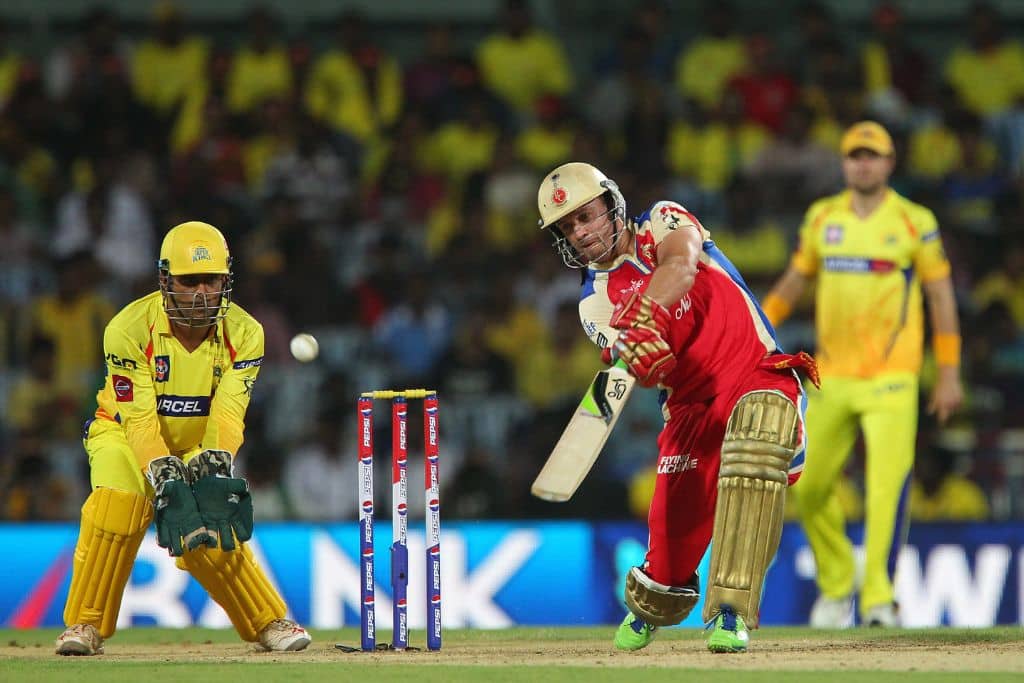The Indian Premier League (IPL) is one of the most watched sports globally and has played an instrumental role in mobilising young talent, increasing sports-related funding for India, and bolstering the economy through its large sponsorship and revenue generation activities. However, the sport is associated with an array of environmental issues. In recent years, the IPL has tried to find various ways to make the sport greener, but there is still a long way to go.
—
The 17th edition of the Indian Premier League (IPL) commenced with the Chennai Super Kings (CSK) and Royal Challengers Bengaluru (RCB) playing the first match on March 22, 2024. The event gathered 113 million views from JioCinema, the IPL’s official streaming platform, representing a 51% jump from last year’s figures. Similarly, Disney Hotstar saw 168 million unique viewers tune in for the same match.
Founded in 2007, the IPL’s impact on the economy is undeniable.
According to the IPL Valuation report 2022, the IPL Ecosystem was valued at US$3.5 billion in 2015; by 2022, its value nearly quadrupled, reaching US$10.9 billion.
The substantial jump in 2015 was driven primarily by media rights. However, increase in the number of matches played, sponsorship deals, and higher ticket sales also played a role. This rise in popularity had a cascading effect on the economy, leading to a rise in sports tourism by 30% in 2019 and a boost to tier 2 cities, with people combining travel with cricket match experiences. It also led to improvements in infrastructure, higher employment rates, and betterment of the hospitality industry. There has also been a rise in start-ups such as Sports365, Upstox, and Dream11, which have utilised prominent cricket players to market their services and products, fuelling consumer purchase.
In 2023, IPL witnessed a significant rise in their advertisement revenue. For that, the Board of Control for Cricket in India (BCCI) has to pay higher tax for the year 2021-2021, generating higher revenue to the government of India.
The Carbon Footprint of Cricket
Alongside a substantial economic footprint, IPL is also accompanied by a high environmental footprint. A single IPL match in 2023 emitted around 10,000 tonnes of carbon dioxide equivalent (tCO2e), which is equivalent to the carbon emissions of over 2 million homes. Over a season, this figure can reach anywhere between 750,000 and 900,000 tCO2e. This represents a significant increase from the previously estimated 42,264 tonnes of tCO2e measured in 2010.
IPL’s carbon footprint comprises travel and logistics, waste generation, water, and electricity.
Turf sports such as cricket require enormous amounts of water for ground maintenance. Watering the grounds helps in turf rejuvenation and builds resistance to wear, fostering healthy pitches. During dry spells, the clay-based soil used in cricket grounds have a tendency to crack, which can hamper players’ safety. A standard cricket stadium requires 270,000–300,000 litres per week to keep the ground in a healthy and safe condition. In the summer months, the amount is significantly higher.

An increase in the city’s temperature implies an increase in frequency of water irrigation for cricket grounds. This is problematic, as higher temperatures in India often put a strain on water sources.
In 2016, the Supreme Court of India ordered 13 IPL matches to be relocated from drought-hit parts of Maharashtra to other states. In 2024, the National Green Tribunal (NGT), a statutory body exclusively dealing with environment protection, requested the Karnataka State Cricket Association (KSCA) to submit details regarding water use at the Chinnaswamy Stadium.
The energy requirement for a match is also significant. Over 1.6 million units of electricity are used annually, with the Chinnaswamy Stadium in Bangalore alone requiring approximately US$144,000 to be spent on electricity. In 2016, the KSCA installed solar panels on the east end of the stadium to help harness solar power and has prevented 600 tonnes of CO2 emissions. While energy-related emissions seem high, transportation and logistics remain the primary sources of CO2. According to a 2018 report by Eliminate Carbon Emissions (ECE), contracted by the IPL Management upon the recommendation of the United Nations Environment Program (UNEP) to calculate the IPL’s annual carbon footprint, 42% of the emissions come from travel and logistics, including travel of spectators and teams.
You might also like: The Carbon Footprint of Football: Unveiling the Dark Side of the Game
Cricket and Climate Change
Another factor highlighting the need to make cricket more sustainable is that the sport itself has been affected severely by climate change.
In 2023, the final IPL match between Chennai Super Kings (CSK) and Gujrat Titans (GT) had to be postponed twice due to heavy rain and inclement weather. In 2021, IPL matches were moved to the United Arab Emirates (UAE) due to Covid-19. Playing under the sweltering climatic conditions that characterise the country meant the players had to find ways to cool themselves during the match.
“It’s important that we adapt to the heat and the humidity. When the guys came out of isolation, it was very hard to adapt. It was important to keep them hydrated. We try to encourage them to drink as much water as possible. We have a team of qualified doctors in our support staff who help our players keep up with the hot and humid conditions,” said Evan Speechly, RCB’s psychotherapist.
Cold towels, ice vests and ice boxes were all used to keep the players cool. In 2022, RCB captain Faf du Plessis spoke about playing in harsh climatic conditions and how players are required to drink plenty of fluids to combat dehydration and heat related illness.
The Way Forward
The IPL has the ability to promote environmental awareness and become a climate stalwart by educating fans and promoting sustainable practices. To address climate change, reduce waste, and raise awareness, in 2018, the BCCI partnered with the United Nations Environment Programme (UNEP) to implement green protocols. In the same year, a Chinnaswamy stadium filled with posters promoting the importance of waste separation and reducing waste hosted the first ever “green” match. Non-biodegradable plastics were not allowed and vendors were asked to use areca leaf plates and bowls to sell food. Volunteers in green shirts interacted with the crowd to educate them about waste management and a zero-littering policy.
A similar move took place in the Wankhede Stadium, the IPL match venue in 2022, and required extensive renovation. The use of novel materials and special carbons contributed to a significant reduction in the carbon footprint of the stadium. Following the footsteps of the Chinnaswamy stadium, in 2023 the Holkar stadium in Indore also said it would install 376 solar panels, a move that is expected to save 277 tonnes of carbon emission per year.
Teams also played a huge part in mobilising green initiatives. RCB donned green jerseys in 2011 to spread awareness about climate change. In 2023, jerseys made using recycled stadium waste were donned in their IPL match against Rajasthan Royals. Other initiatives by RCB include partnership with Goodera to restore three lakes in Bengaluru and driving behavioural change towards climate change in partnership with Bengaluru schools.
In 2018, Delhi Capitals (then Delhi Daredevils) partnered with Coca-Cola to support sustainable waste management in the Feroz Shah Kotla Stadium. The Kolkata Knight Riders flag with plastic sticks distributed to fans in the stadiums was switched to paper sticks. Tree planting was also undertaken with every “six” that was hit during the 2017 and 2018 matches at Eden Gardens. Rajasthan Royals partnered with Schneider electric to mobilise climate action. The Rajasthan Royal Foundation’s Project Khushaali enabled opportunities for women to access clean water and energy. In 2024, Rayzon Solar partnered with CSK and GT to raise awareness on environment conservation and the importance of renewable energy. CSK also partnered with Indian Institute of Technology, Madras, to understand how environment conservation can be achieved in the games.
In 2022, Tata Group, India’s largest conglomerate, became the official sponsors of the IPL. That same year, Tata Motors launched an auction on the sidelines of the 15th IPL premier league. Proceeds of the auction were donated to Kaziranga National Park to support wildlife conservation efforts. In 2023, Tata partnered up with the BCCI to plant 500 trees for every dot ball that was bowled during the IPL playoffs and finals. However, there is limited information about the actual outcome of the tree planting drives. Tata also replaced the traditional fossil fuel cars on display during the IPL matches with electric vehicles. Every time a batsman hit the official car on display, Tata Motors pledged to donate nearly US$6,000 to enhance biodiversity in coffee plantations in the Indian state of Karnataka. The group launched a similar initiative the following year, pledging to donate the same amount of money, this time to fund the installation of solar panels in Tata memorial hospital.
Measures like these have garnered some success in the war against climate change. However, there is still a long way to go. Lessons from other cricket leagues can provide a way ahead for the IPL.
For example, Somerset County Cricket Club installed LED floodlights, which are 50% more energy-efficient than traditional floodlights. In 2019, Sri Lankan teams began making their jerseys with recycled waste found on the country’s beaches, including 30,000 plastic bottles. And since 2016, electricity consumption at London’s Lord’s Cricket grounds has been 100% wind-generated. Water refill stations and recycle units were also set up to mobilise plastic reduction.
If the IPL follows suit on such policies, it can surely be batting for climate action.
Featured image: Royal Challengers Bangalore/Flickr
You might also like: The Influence of the Sports Industry on Climate Change and How it Can Be Part of the Solution
This story is funded by readers like you
Our non-profit newsroom provides climate coverage free of charge and advertising. Your one-off or monthly donations play a crucial role in supporting our operations, expanding our reach, and maintaining our editorial independence.
About EO | Mission Statement | Impact & Reach | Write for us


















